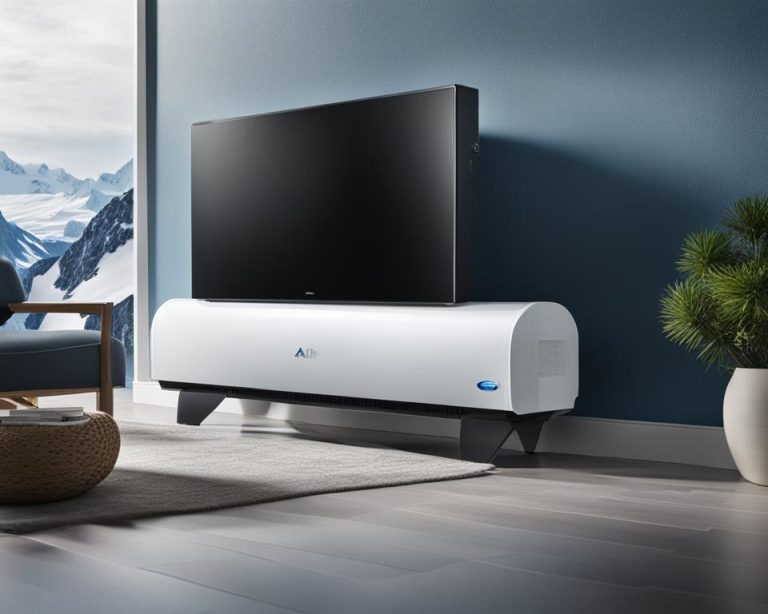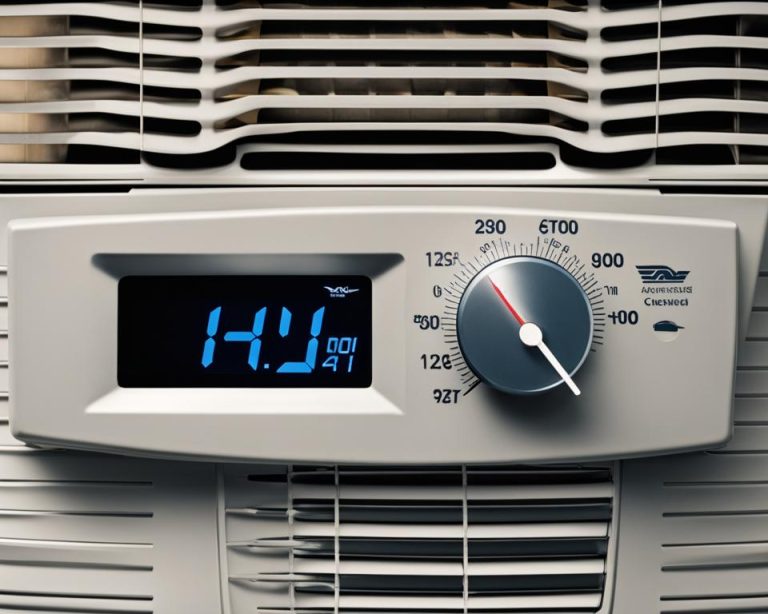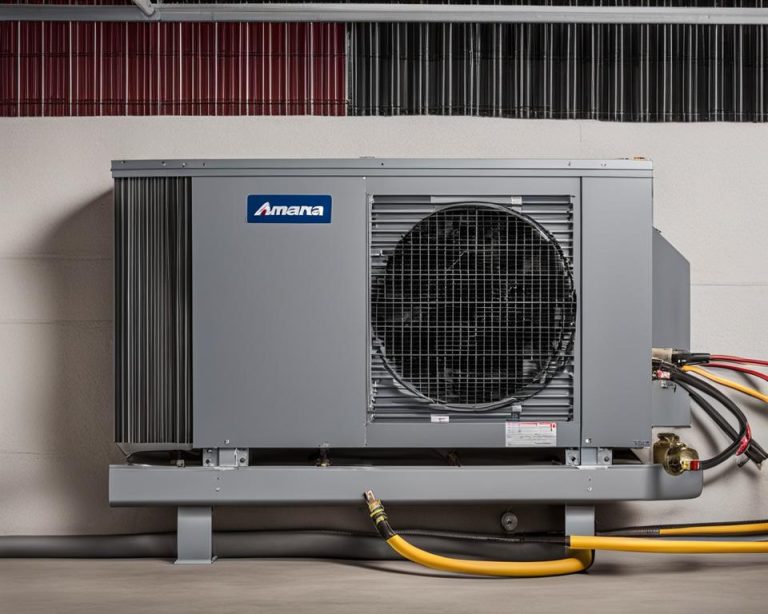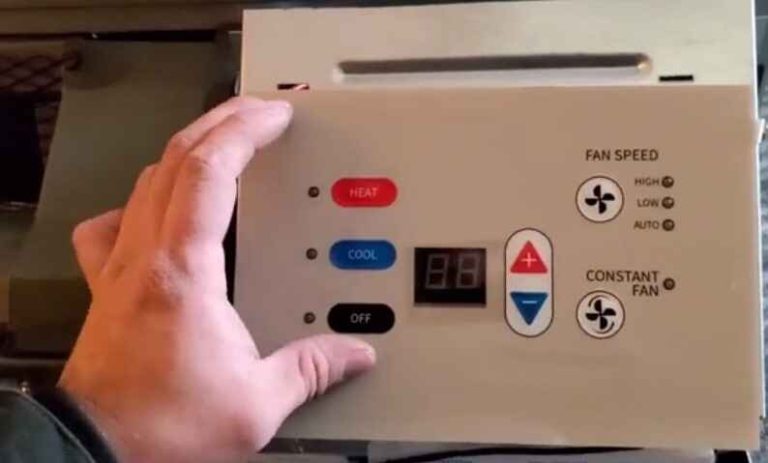If the AC not working; the thermostat says “Wait”, check the circuit breaker, replace the batteries in the thermostat, ensure the thermostat is set to cooling mode, and clean the AC filters. If the issue persists, consult the HVAC technician.
Is your AC not working, leaving you puzzled as the thermostat displays a frustrating “wait” message? You’re not alone. Dealing with a malfunctioning AC system can be both perplexing and uncomfortable, especially when faced with cryptic error messages. Understanding why your AC isn’t functioning properly when the thermostat says “wait” is crucial for troubleshooting and resolving the issue. In this beginner-friendly guide, we’ll unravel the mysteries behind “ac not working thermostat says wait” and provide actionable solutions to get your cooling system back on track.
What the “Wait” message on the thermostat signifies
The “Wait” message displayed on a thermostat typically indicates that the thermostat is temporarily unable to accept new temperature settings or commands. This message usually appears when the thermostat’s internal components are undergoing an operation or process that requires a brief waiting period before the thermostat can respond to user inputs.
Some common reasons why a thermostat may display the “Wait” message include:
1. System delay: After changing the temperature setting, the thermostat may display “Wait” for a short period as it processes the new setting and communicates with the heating/cooling system.
2. Compressor delay: Many thermostats have a built-in compressor delay to prevent the compressor from cycling on and off too frequently, which could damage the system. During this delay, the “Wait” message may be displayed.
3. System startup/shutdown: When the heating or cooling system is initially turning on or shutting down, the thermostat may display “Wait” to indicate that it is in the process of starting up or shutting down the system.
4. Software update: If the thermostat is undergoing a software update or firmware upgrade, it may display “Wait” while the update is in progress.
5. Communication delay: For smart or Wi-Fi-enabled thermostats, the “Wait” message could signify a temporary delay in communicating with the cloud server or your home’s Wi-Fi network.
In most cases, the “Wait” message is temporary and should disappear after a short period, typically ranging from a few seconds to a couple of minutes. If the message persists for an extended period, it may indicate a problem with the thermostat or the HVAC system, and you may need to consult the manufacturer’s troubleshooting guide or seek professional assistance.
Common Causes of AC not working thermostat says wait
When your air conditioning unit is not working and the thermostat displays a “wait” message, it can be frustrating, especially during hot summer days. This issue can arise due to various reasons, and understanding the potential causes can help you troubleshoot and resolve the problem more effectively. Here are ten common causes of an ac not working when the thermostat says “wait,” along with detailed explanations.
1. Condensate Drain Line Blockage
One of the most frequent causes of an ac not working when the thermostat says “wait” is a clogged condensate drain line. As the air conditioner operates, it removes moisture from the air, which collects in a drain pan. This moisture is then drained through a condensate drain line. If this line becomes blocked, water can accumulate in the drain pan, triggering a safety switch that causes the thermostat to display the “wait” message, preventing the ac from working.
2. Frozen Evaporator Coil
Another common cause of an ac not working when the thermostat says “wait” is a frozen evaporator coil. The evaporator coil is responsible for absorbing heat from the air inside your home. If the airflow over the coil is restricted, the coil can freeze, causing the thermostat to display the “wait” message as a safety precaution to prevent further damage to the ac system.
3. Dirty Air Filters
When the air filters in your ac system become clogged with dirt and debris, they restrict airflow, leading to various issues, including the thermostat displaying the “wait” message. Dirty air filters can cause the evaporator coil to freeze or the ac unit to overheat, triggering the “wait” message as a protective measure.
4. Refrigerant Leaks
Refrigerant leaks can also cause the ac not to work when the thermostat says “wait.” Refrigerant is a crucial component of the ac system, responsible for transferring heat from inside your home to the outside. If there is a leak, the refrigerant level drops, affecting the system’s ability to cool efficiently, leading to the “wait” message on the thermostat.
5. Electrical Issues
Electrical problems, such as faulty wiring, tripped circuit breakers, or blown fuses, can prevent the ac from receiving the necessary power to operate correctly. In such cases, the thermostat may display the “wait” message as a safety precaution to prevent further damage to the system.
6. Thermostat Malfunctions
In some instances, the thermostat itself may be malfunctioning, causing the “wait” message to appear even when the ac system is functioning correctly. This could be due to a faulty sensor, a software issue, or a problem with the thermostat’s internal components.
7. Compressor Failure
The compressor is the heart of the ac system, responsible for circulating the refrigerant and facilitating the heat transfer process. If the compressor fails or has issues, it can cause the thermostat to display the “wait” message as a protective measure to prevent further damage to the system.
8. Blower Motor Failure
The blower motor is responsible for circulating air throughout your home. If the blower motor fails or experiences problems, it can restrict airflow, leading to issues such as frozen evaporator coils or overheating, causing the thermostat to display the “wait” message.
9. Incorrect Thermostat Settings
Sometimes, the issue may be as simple as incorrect thermostat settings. If the thermostat is set to the wrong mode (e.g., heat instead of cool) or has incorrect temperature settings, it may cause the “wait” message to appear, preventing the ac from working properly.
10. Outdoor Unit Issues
Problems with the outdoor unit, such as a dirty condenser coil, fan motor failure, or debris blocking the airflow, can also lead to the ac not working when the thermostat says “wait.” These issues can cause the outdoor unit to overheat or malfunction, triggering the “wait” message as a safety measure.
When faced with an ac not working and the thermostat displaying a “wait” message, it is crucial to identify the root cause of the problem. Some issues, such as clogged air filters or condensate drain line blockages, may be relatively simple to resolve on your own. However, for more complex problems involving electrical issues, refrigerant leaks, or compressor failures, it is advisable to seek professional assistance from a qualified HVAC technician to ensure the safe and proper repair of your ac system.
DIY Troubleshooting Steps for ac not working thermostat says wait
If your ac not working and the thermostat says “wait,” it can be frustrating, especially during the hot summer months. This issue can occur due to various reasons, and it’s essential to take the necessary steps to resolve the problem. Here are 10 DIY troubleshooting steps to help you tackle the “ac not working thermostat says wait” issue:
1. Check the thermostat settings:
Start by ensuring that the thermostat is set to the “cool” mode and that the desired temperature is lower than the current room temperature. If the settings seem correct, try adjusting the temperature a few degrees lower to see if it triggers the air conditioning unit to turn on.
If the thermostat is programmable, check the scheduling settings to ensure that the system is not in a “hold” or “away” mode, which could prevent the air conditioning from turning on.
2. Clean or replace the air filter:
A dirty or clogged air filter can significantly reduce airflow and cause the air conditioning system to work harder, potentially leading to overheating and the “wait” message on the thermostat.
To clean the air filter, follow these steps:
– Locate the air filter (usually behind a return air grille or in the indoor unit)
– Remove the filter and inspect it for dirt and debris buildup
– If the filter is reusable, clean it using a vacuum cleaner or by rinsing it with water (depending on the filter type)
– If the filter is disposable, replace it with a new one
It’s recommended to clean or replace the air filter every 1-3 months, depending on the manufacturer’s recommendations and the level of usage.
3. Check for power issues:
Ensure that the air conditioning unit is receiving power by inspecting the circuit breaker or fuse box. If the circuit breaker has tripped or the fuse has blown, reset the circuit breaker or replace the fuse.
If the issue persists, check for any visible signs of damage to the power cord or electrical connections. If you notice any issues, it’s best to consult a professional electrician for further assistance.
4. Inspect the condensate drain line:
The condensate drain line is responsible for removing excess moisture from the air conditioning system. If this line becomes clogged or blocked, water can back up and trigger a safety switch, preventing the system from turning on.
To inspect the condensate drain line, follow these steps:
– Locate the drain line, typically running from the indoor unit to a nearby drain or outside
– Check for any visible obstructions, such as dirt, debris, or algae buildup
– Use a small wire or compressed air to clear any blockages in the drain line
– If the drain line is severely clogged or damaged, consider replacing it
Proper drainage is essential for the efficient operation of the air conditioning system, as a blocked drain line can lead to water damage and potential health risks.
5. Check for refrigerant leaks:
If the air conditioning system is low on refrigerant, it may struggle to cool the air effectively, leading to the “wait” message on the thermostat.
While it’s possible to check for visible signs of refrigerant leaks, such as ice buildup or oil stains, it’s recommended to have a professional HVAC technician perform a thorough inspection and recharge the system if necessary.
Handling refrigerants requires proper equipment and training, as they can be harmful if not handled correctly.
6. Inspect the outdoor unit:
The outdoor unit, also known as the condenser unit, plays a crucial role in the air conditioning system. If this unit is obstructed or damaged, it can prevent the system from working properly.
To inspect the outdoor unit, follow these steps:
– Ensure that the area around the unit is clear of any debris, leaves, or obstructions that could block airflow
– Check for any visible signs of damage, such as dents, cracks, or corrosion
– Gently clean the unit’s fins and coils using a soft-bristle brush or compressed air
– Inspect the fan blades for any damage or obstructions
If you notice any significant issues with the outdoor unit, it’s best to consult a professional HVAC technician for further evaluation and repair.
7. Check the air ducts:
The air ducts are responsible for distributing cool air throughout your home. If these ducts are blocked, leaking, or damaged, it can prevent proper airflow and cause the air conditioning system to work inefficiently.
To inspect the air ducts, follow these steps:
– Locate the air vents and check for any visible obstructions, such as furniture or curtains
– Use a flashlight to inspect the inside of the ducts for any debris, dust buildup, or visible damage
– Check for any air leaks around the duct connections and seams, as these can reduce the system’s efficiency
If you notice significant issues with the air ducts, such as severe blockages or damage, it’s best to consult a professional HVAC technician for duct cleaning or repair.
8. Reset the thermostat:
In some cases, resetting the thermostat can resolve the “ac not working thermostat says wait” issue. This process can help clear any potential software glitches or reset the thermostat’s programming.
To reset the thermostat, refer to your thermostat’s manual for the proper procedure. Typically, this involves removing the batteries or turning off the power supply for a few minutes before turning it back on.
After resetting the thermostat, adjust the settings to the desired temperature and mode, and wait to see if the air conditioning system responds.
9. Check the wiring:
Faulty wiring or loose connections between the thermostat, indoor unit, and outdoor unit can prevent the air conditioning system from functioning properly, leading to the “wait” message on the thermostat.
If you’re comfortable working with electrical components, you can inspect the wiring for any visible signs of damage, such as frayed or burnt wires, or loose connections.
However, if you’re not confident in your electrical skills, it’s best to consult a professional electrician or HVAC technician to inspect and repair any wiring issues safely.
10. Consider a professional HVAC technician:
If you’ve tried all the DIY troubleshooting steps, and the “ac not working thermostat says wait” issue persists, it’s time to seek professional help.
An experienced HVAC technician has the necessary expertise, tools, and diagnostic equipment to identify and resolve complex issues with your air conditioning system. They can perform a thorough inspection, diagnose the root cause of the problem, and provide the appropriate repair or replacement services.
Attempting complex repairs or modifications on your own can be dangerous and may void any warranties or guarantees on your air conditioning system.
By following these 10 DIY troubleshooting steps, you’ll be better equipped to address the “ac not working thermostat says wait” issue. However, if the problem persists or you’re uncomfortable with any of the steps, it’s always best to consult a professional HVAC technician for their expert assistance.
Conclusion
In conclusion, when your AC is not working and the thermostat says “wait,” it’s crucial to troubleshoot promptly to restore comfort to your home. By understanding potential causes such as a frozen evaporator coil, faulty wiring, or thermostat issues, you can take appropriate action. Begin by checking for simple fixes like changing the air filter or resetting the thermostat. If problems persist, it’s wise to seek professional HVAC assistance to diagnose and address the underlying issues effectively. Remember, timely attention to “AC not working thermostat says wait” messages can prevent discomfort and costly repairs down the line, ensuring your cooling system operates efficiently.







One Comment